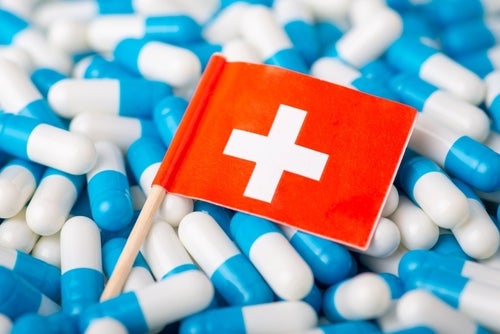F. Hoffmann-La Roche had 28 patents in artificial intelligence during Q3 2023. F. Hoffmann-La Roche Ltd filed several patents during Q3 2023. One patent is for a handheld diagnostic device that can perform diagnostic measurements and capture images of wounds, storing the results in a database. Another patent focuses on privacy-preserving computing, allowing the use of subject data for secondary purposes while protecting privacy. A diagnostic analyzing system is described in another patent, which improves the accuracy of validation algorithms. The company also filed a patent for detecting and reporting operation errors in an in-vitro diagnostic system, utilizing machine learning to improve software updates. Lastly, a patent discusses transforming digital pathology images from different slide scanners into a common format for analysis. GlobalData’s report on F. Hoffmann-La Roche gives a 360-degreee view of the company including its patenting strategy. Buy the report here.
F. Hoffmann-La Roche grant share with artificial intelligence as a theme is 18% in Q3 2023. Grant share is based on the ratio of number of grants to total number of patents.
Recent Patents
Application: Method and devices for point-of-care applications (Patent ID: US20230270374A1)
See Also:
The patent filed by F. Hoffmann-La Roche Ltd. describes a handheld diagnostic device designed for point-of-care applications. The device includes a diagnostic measurement unit that can perform diagnostic measurements using test elements, a camera for capturing images of wounds, and a control unit for controlling the diagnostic measurement and image capture. The control unit is also responsible for storing the measurement results and images in a patient's database record. The patent also discloses a diagnostic system and method using the handheld device.
The claims of the patent provide further details and features of the handheld diagnostic device. Claim 1 describes the device's components, including the diagnostic measurement unit, camera, and control unit. Claim 2 specifies that the database record contains identification information for the patient, images, and measurement results. Claim 3 states that the database record can be stored on a server device, allowing electronic communication with the handheld device. Claim 4 mentions that the patient's database record can be part of an electronic health record in a hospital information system, with the control unit assigning the measurement results and images to the record.
Claim 5 describes the diagnostic parameters that can be measured by the device, such as glucose concentration, coagulation parameters, ketone concentration, and lactate concentration. Claim 6 states that the device can identify the patient or user. Claim 7 explains that the control unit can perform wound management processes, including deriving diagnostic information from the captured images. Claim 8 lists various features of the wound management process, such as displaying the image, providing measurement tools, image recognition tools, displaying previous images, downloading patient information, displaying diagnostic parameter development, and escalating diagnostic information to healthcare professionals.
Claim 9 introduces a user management unit that can limit device functionality to specific user groups and block unauthorized use. Claim 10 specifies that the device is designed for point-of-care applications in professional healthcare facilities. Claim 11 mentions that the diagnostic test element can be a test strip. Claim 12 reiterates the user management unit's functionality. Claim 13 emphasizes the unit's ability to block unauthorized use.
Claim 14 describes the diagnostic system, which includes the handheld device and server device for retrieving measurement results and images. Claim 15 outlines the diagnostic method using the handheld device, including performing diagnostic measurements, capturing images, and storing data in the patient's database record. Claims 16 and 17 pertain to computer programs that prompt users to carry out measurements, capture images, and store data. Claims 18 and 19 relate to computer-readable storage mediums that enable the server device to retrieve and store patient data from the handheld device.
In summary, the patent describes a handheld diagnostic device for point-of-care applications, including a diagnostic measurement unit, camera, and control unit. The device can perform diagnostic measurements, capture images of wounds, and store data in a patient's database record. The patent also covers a diagnostic system and method using the handheld device.
To know more about GlobalData’s detailed insights on F. Hoffmann-La Roche, buy the report here.
Premium Insights
From

The gold standard of business intelligence.
Blending expert knowledge with cutting-edge technology, GlobalData’s unrivalled proprietary data will enable you to decode what’s happening in your market. You can make better informed decisions and gain a future-proof advantage over your competitors.





